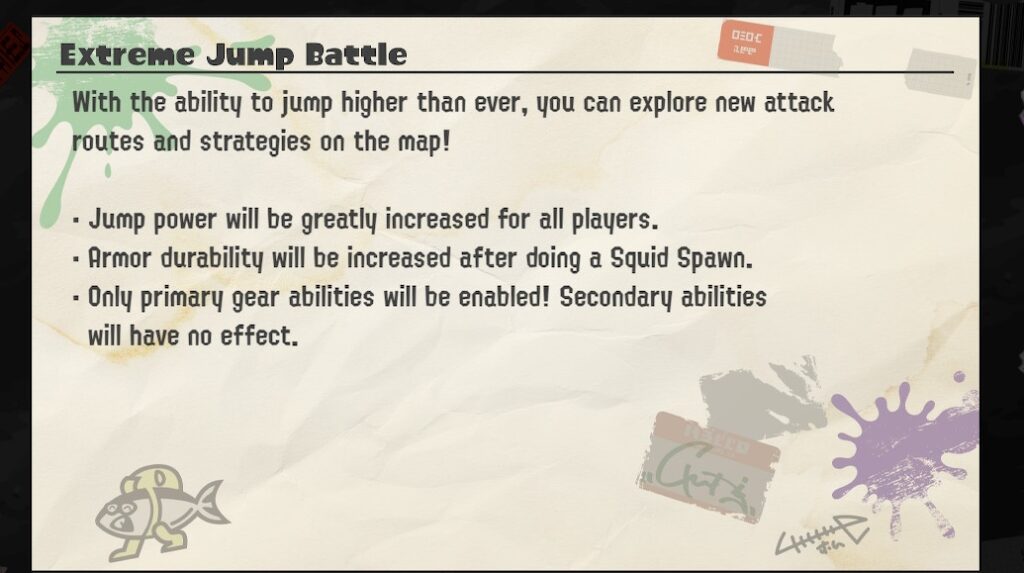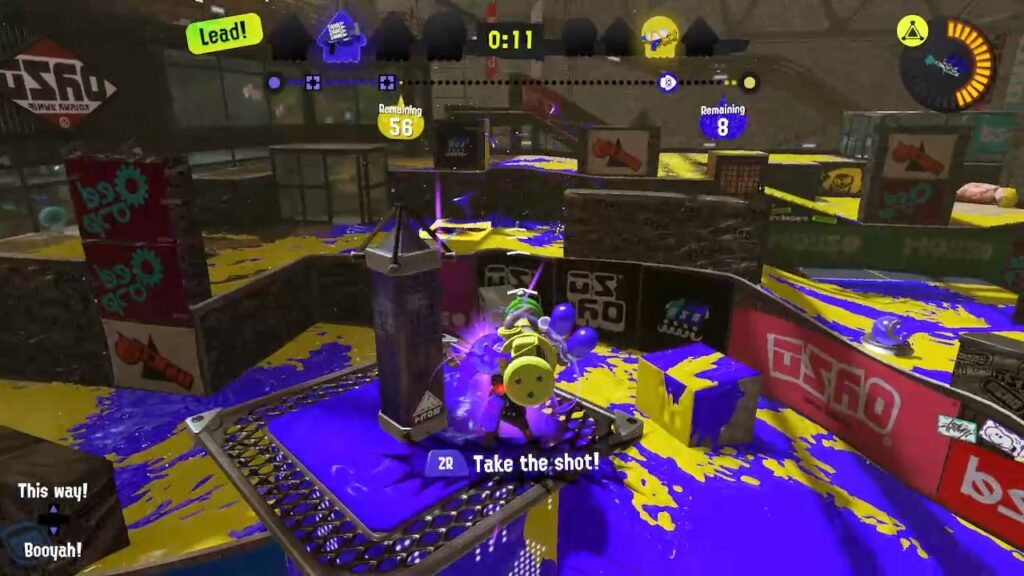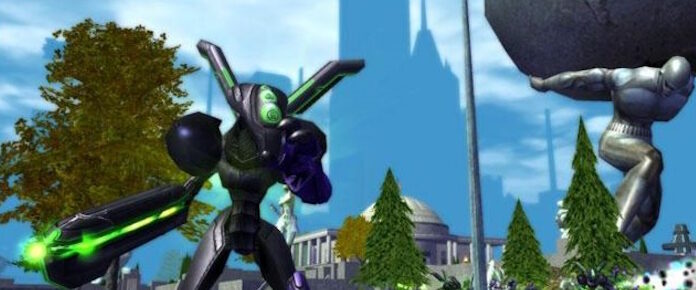
One thing we haven’t talked about yet here in Massively on the Go is Splatoon 3’s new summer-released mode, Challenges, which is somewhat more akin to Overwatch’s Arcade mode than to the League Battles we saw in Splatoon 2. The difference between Challenges and Arcade Mode, however, is that it’s ranked, there’s only one random theme available, and it’s rotated throughout the global day(s) in two-hour playable windows for only about one day. All that for a medal (if you’re lucky) and a measly Shell-Out token.
Normally, a lot of that doesn’t appeal to me, and I would think the mixture of randomness and experimental rulesets combined with rank play for a 30k coin value would be a turn-off for most players. However, that doesn’t seem to be the case. If anything, what people dislike is the lack of availability of the mode. And that’s awfully familiar, as we had some issues with Salmon Run when we first tried it at E3 2017.
Challenges actually have a lot in common with Salmon Run as it was originally implemented in Splatoon 2: They can act as a kind of training ground, and they’re limited-time events. Behind the scenes, though, the randomness allows the developers to look into details such as map playability with low gravity, balance among sets with a special weapon, and even the learning curve on various weapons when players are randomly forced to use different ones.
It’s not all secret live-beta-testing-in-disguise, though! While it may help the devs, players can also abuse mechanics in a rather safe environment, sometimes in modes they don’t frequent as often. For example, I’m a Turf War/Splat Zones man, myself. I live for painting turf, and most of my gear reflects that. When a Challenge involving another mode comes in, it’s new-ish territory for me. Certain themes, like only your main gear slot’s effect working, make these more accessible while also pushing players to try different gear. I’m super-styling when I play my normal modes, but sadly I look like a clown when playing a lot of Challenges. (As a side note, this is why I say players should be rewarded with at least 1 Super Sea Snail, both as motivation and to help keep us all fashionable.)
Fashion aside, it’s the short burst of competitiveness with random rules that makes these challenges appealing. They are ranked, but unlike actual ranked play, they have no long-term effects. I can’t speak for all players, but I prefer games with randomness, as I feel they can make things more accessible for newer players. The rank is a nice touch, since it gives me an idea of how well I learned/adapted to the rule set.
Even when I’m bad at a challenge, I learn something new. For example, I’m usually the guy who breaks into the enemy base and paints the heck out of it. I do that by learning the map and using kits that help me move quickly and (when possible) unseen.
But the low-gravity Challenge made me realize my weak point is that I focus a lot on the ground and using paint to move around. I was losing because a lot of players simply jumped over barriers we couldn’t transverse, and it took me a while to get into that mindset. Even with the gravity off, I noticed after the event that I’ll paint even a short step so I can swim through it, which could give away my position more than if I’d just quickly hopped over it and moved on.
This is what I mean by Challenges acting as a kind of training ground. It’s not just that you may be forced to use weapons you’re not used to, as in Salmon Run. And it’s not just playing in modes you normally avoid due to long-term ranked play. It’s the combination of these things in constantly shifting ways that can highlight different playstyles. For the longest time, I was using only four weapons, favoring the Sprinkler as my sub-weapon and avoiding about three-fourths of the specials. Since getting into Challenges, I’ve become slightly more flexible, changing not only my load-outs more frequently but also my way of playing them.
Let’s take Tower Control challenges as an example. A lot of people go with Suction Bombs, as they’re easy to stick on the tower and can one-shot a player when they go off. As someone who tends to focus on painting, though, I don’t usually use them. I’m more flexible now after doing Challenges, and yes, I’m now one of those people who leave you a bomb when I find your jump-location, but repeated Tower Control taught me something about my Sprinklers.
As the above Wiki entry notes, Spinklers can be used as a light shield, taking a few hits for you. They also can act as a kind of detection system, as there’s a specific sound effect they make when they hit a player, so tossing the Spinkler ahead of me onto the tower can give me an idea of where the player may be hiding. Alternatively, putting it in front of the tower does all of this and paints the terrain around my team as the tower moves forward, helping to ensure that we have some extra ink nearby to safely swim in. At the end of the day, I’m a painter at heart, so in the games where my team has the Tower handled, I can move ahead and paint turf so the enemy has no place to swim.
But let’s circle back for a moment. Many players, including me, want to do more Challenges. This may seem tricky in some ways, as that could mean the devs would have to spend more time on development or that Challenges could become stale if they’re available too often. Salmon Run, in some ways, has gotten to that point, in that a lot of the people I ran them with in the early days seem to have vanished, though it’s also difficult content with few updates and fewer meaningful things to grind for. Rewards do matter.
With Challenges, though, the current two-hour availability throughout a roughly 24-hour period (such as 3-5 a.m., 7-9 p.m., and so on) is just very inconvenient. Yes, lately they’ve been more frequent, but not quite accessible for most people. If you aren’t watching the game like a hawk, you’ll miss your opportunity to do them. In fact, I missed a lot of Challenges because of their very narrow and last-minute scheduling, to the point that I now enter them in my calendar to help make sure I can play in them.
The rotations, however, also make it difficult to actually obtain prizes, as once that rotation is gone, you lose your stamps. At the least, if you’re able to play the same theme in the “day” it’s available, but it can feel pretty bad if you only get four out of five stamps due to time restrictions, not just within the two-hour period, but because you can’t/couldn’t make the other two-hour periods.
Switching Challenges to even a 24-hour period could alleviate that as well as increase participation. When a Challenge is particularly rough, I’ll drop out after my five qualifying rounds if I can make only that single two-hour window. It’s not fun thinking about grinding hard for wins that won’t go anywhere.
Similarly, even if I am enjoying a Challenge, I may stop early because I won’t feel like I can move my rank much in such a limited time. I play the most when my schedule actually allows me to get two of those windows of opportunity. I wouldn’t be surprised if a lot of other players are the same, meaning that having Challenges for 24 hours means we can just grind as much as we want instead of praying that the Splat-schedule people lay things out with time-zone-appropriate hours.
 Massively OP’s Andrew Ross is an admitted Pokemon geek and expert ARG-watcher. Nobody knows Niantic and Nintendo like he does! His Massively on the Go column covers Pokemon Go as well as other mobile MMOs and augmented reality titles!
Massively OP’s Andrew Ross is an admitted Pokemon geek and expert ARG-watcher. Nobody knows Niantic and Nintendo like he does! His Massively on the Go column covers Pokemon Go as well as other mobile MMOs and augmented reality titles!
















